The Princely Court, Chindia Tower, and Holy Friday Church in Târgoviște, Dâmbovița County, Romania
The Princely Court, Chindia Tower, and Holy Friday Church in Târgoviște, Dâmbovița County, Romania

Hello travelers
In today's blog, we will follow in the footsteps of our ancestors in Wallachia, where we will discover a truly special place.
We arrived in Târgoviște by car. The city is attractive and green, a city that breathes. I must admit that it was quite difficult to find a parking space, but in the end we managed, and I didn't have to pay for parking.
From where we left the car to the Royal Court Museum Complex, it was only a few minutes' walk.
We bought the tickets right in front of the main entrance. The cost of a ticket was 20 lei/4 euros/person. The museum complex is open from Tuesday to Sunday between 9 a.m. and 6:30 p.m. (opening hours may vary during the cold season). The ticket seller gave us some advice about visiting the complex. From what she told us, there are many areas to visit.
So I will start with the Royal Court. Immediately after entering through a huge brick gate, we come across the ruins of the former fortress and some very thick walls. From what I have read, the first records of this place date back to 1403, but below I will provide more fascinating information about the Royal Court.
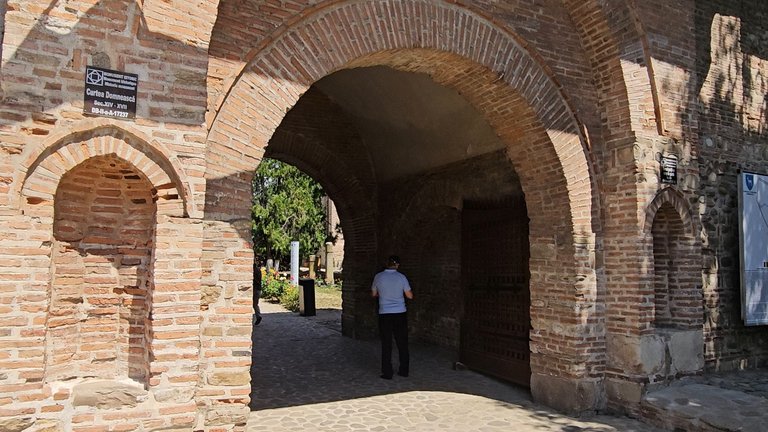
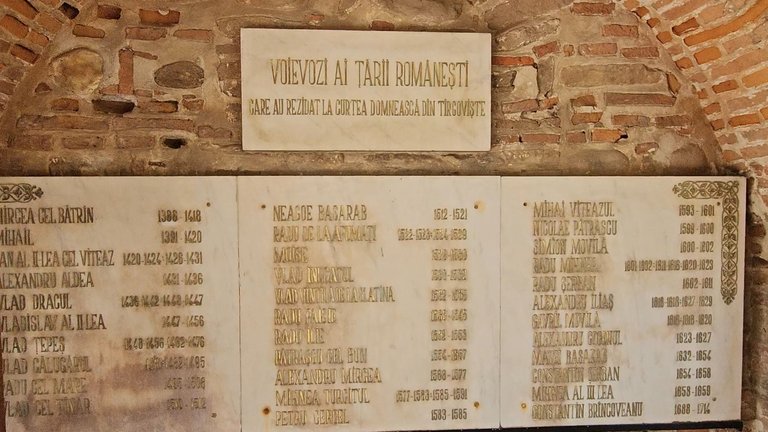
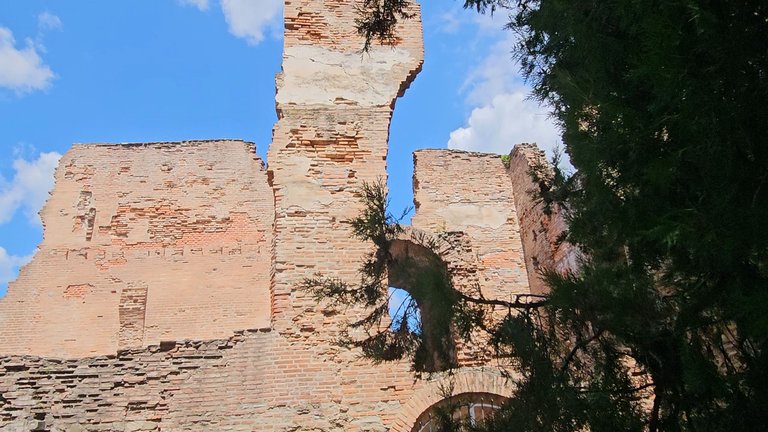

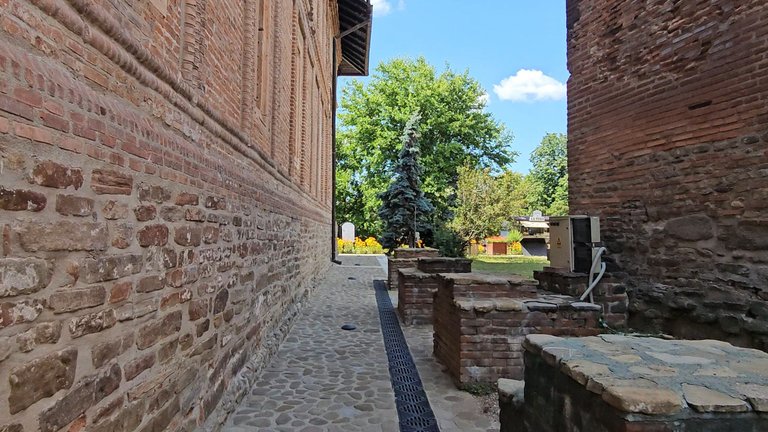
The Princely Court was conceived as a complex of edifices that would serve both the rule as an institution and its needs, as well as to the family of the ruler who is on the throne and its entourage (courts and servants of the court, body of guard, etc.). Also, this was the place where the charters of the royal chancellery were written and where the Divan’s judgments took place, which makes hundreds of medieval documents have as their place of issue the city of Targoviste. In turn, foreign travelers and adventurers on various occasions in Targoviste, whether they were transiting to Istanbul or representing the interests of the European courts left written testimonies on the city and the royal residence, but also of the customs and way of being of the people they interacted with. The first internal documentary mention of the Princely Court in Târgovişte dates from 1403, when Mihai I, the son and associate to the throne of Mircea the Elder, mentions the requirements of his house in Targoviste in a commercial privilege, a formula that is repeated in 1409, but also later and later under the formula of the city of my reign. Another important mention of the city is directly related to the Crusade of Nicopolis, when, in 1396, a young squire at that time, the Bavarian Johann Schiltberger, who became a prisoner of the Ottomans after the famous battle, will mention that he passed on his way to the Balkan war theater and through the two capitals of Wallachia, Argeş and Targoviste (Agrich und T.
The years passed through the royal residence and only during the reign of Constantin Brâncoveanu (1688-1714) it will benefit from a final reconfiguration. Reducing a new brilliance of the palace and churches of the courtyard, as well as other monuments of the city, is also due to the voivode martyr and his wife, Mrs. Maria. The largest votive painting of some voivodes from the Romanian churches is located in Targoviste, in the Great Royal Church, the one built in 1584 and painted in fresco in the time of Constantin Brâncoveanu, between 1697-1698, by a team of painters led by Constantinos. The western wall of the narthex puts together a part of the founders of the royal court and, implicitly, Târgoviștei: Matei Basarab, Neagoe Basarab, Constantin Brâncoveanu Basarab, Petru Cercel, Mihai Viteazul, Radu Șerban, Constantin Șerban Șerban, Șerban Cantacuzino and Radu Mihnea.
We left the Royal Court behind and continued on toward the Chindia Tower. I was very curious to see if we could climb the tower, and the answer was not long in coming, because I had seen a few people somewhere at the top of the tower.

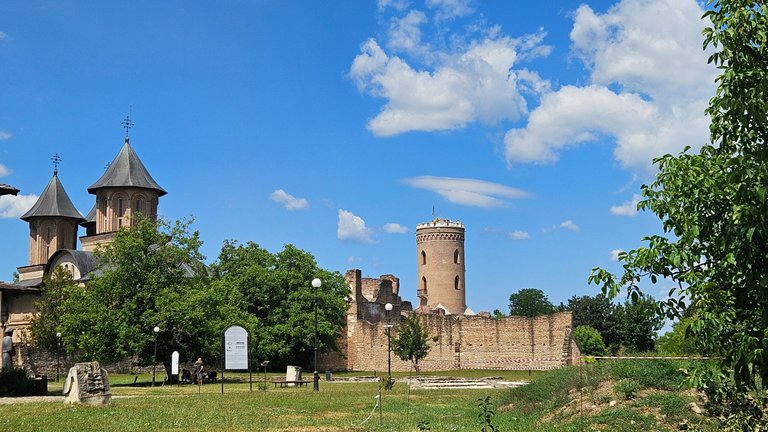
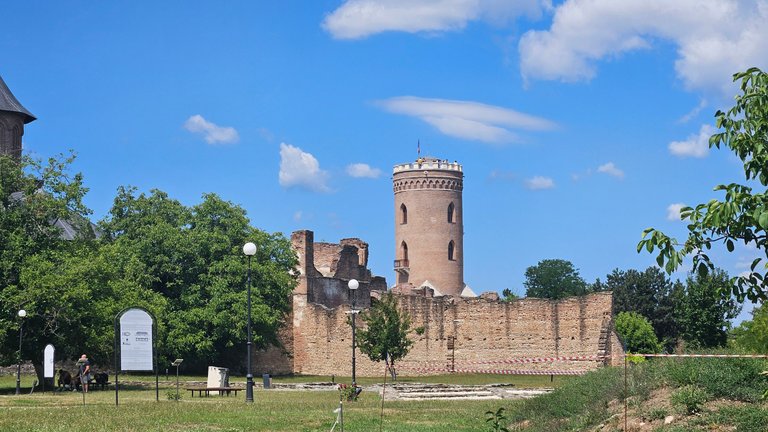
Let's conquer the Chindia Tower.

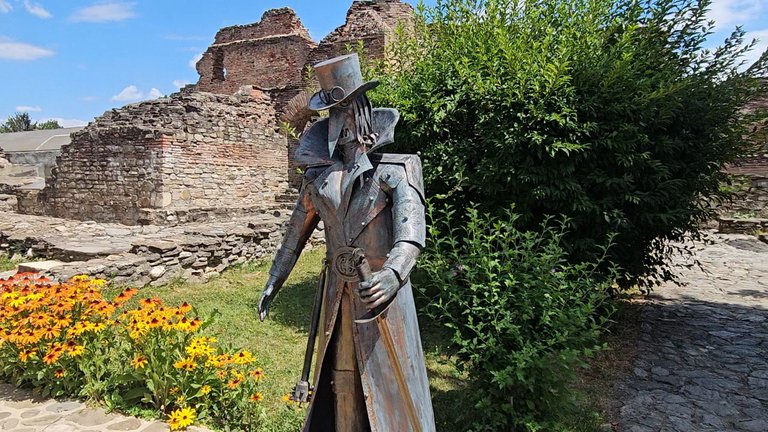
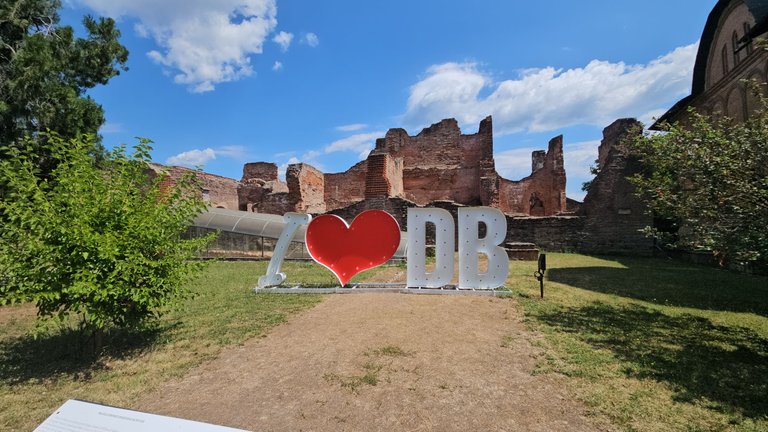
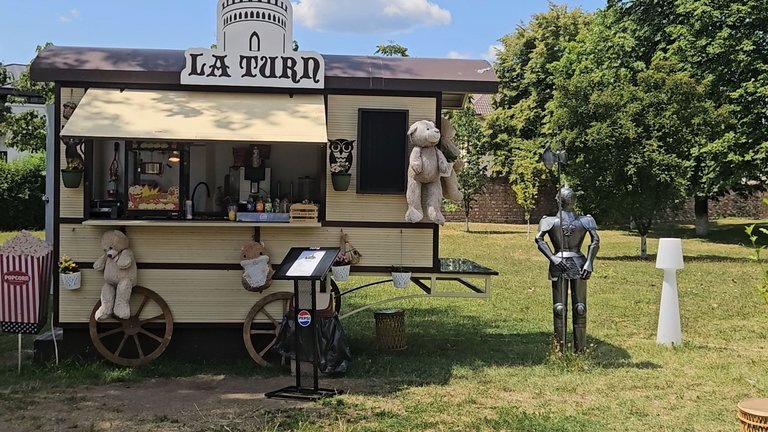
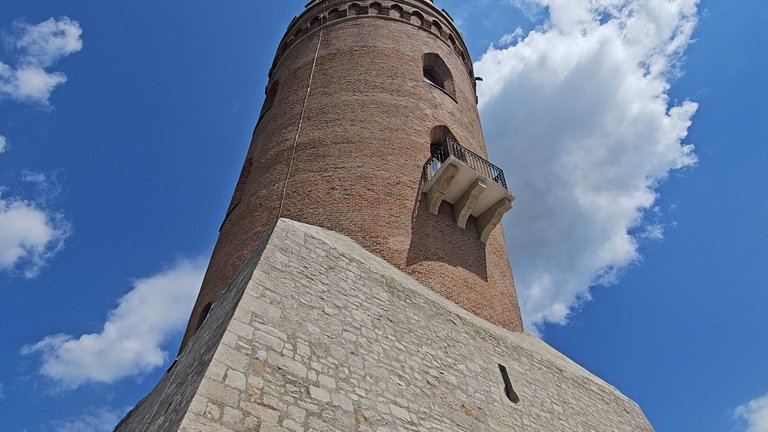
I don't know if I mentioned this at the beginning, but if you purchased that ticket for 20 lei/4 euros/person, you will have access to everything in this museum complex.

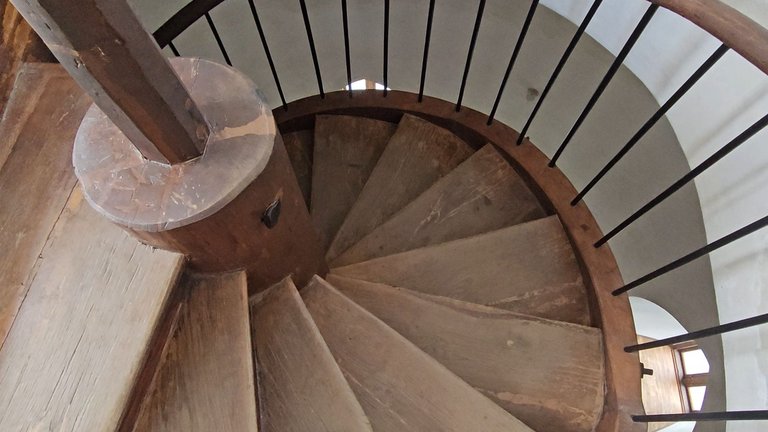
And yes, you can climb to the top of the tower using narrow wooden stairs; there is no elevator. In my opinion, the tower is around 25-30 meters high.
That's what I did, I climbed the wooden stairs and didn't stop until I reached the top of the tower. I got there very quickly, in just a few minutes.
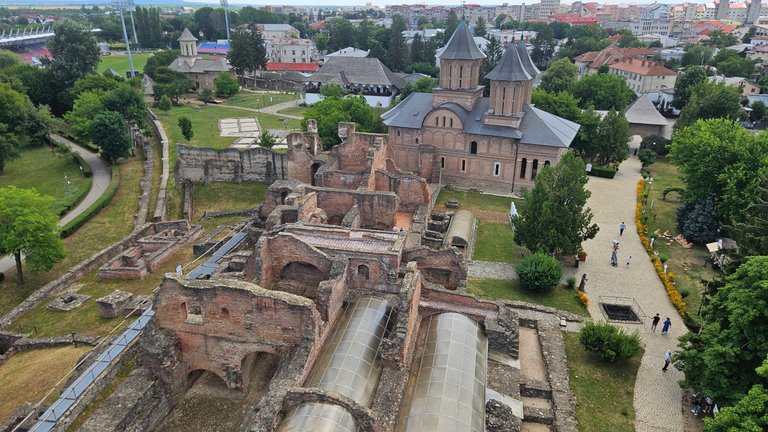
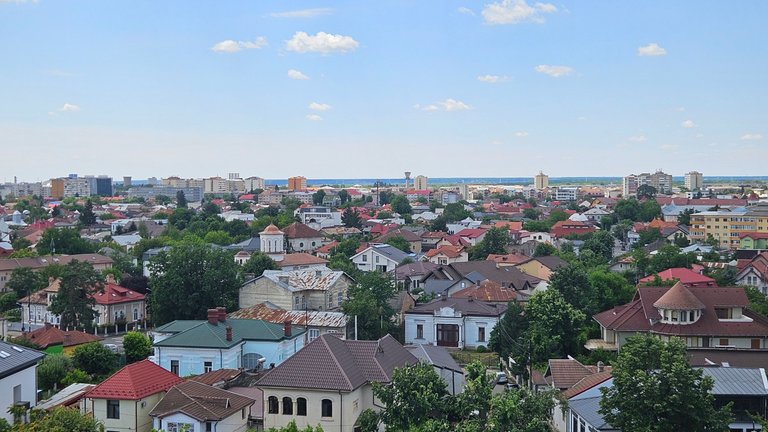
I found some information about this tower, so you can read it below.
He played the role of donjon of the royal court, as well as a powerful defensive element. The Chindia Tower also fulfilled the observation and guarding point of the court and city.
It was equipped with drawing gaps, and on the first level there was an access door with connection to the royal palace. In the sec. XVI XVI also played a prison role. According to archaeological research, it was built in the first half of the 15th century, probably during the reign of Vlad Dracul.
Another possible founder of the tower would have been the famous Vlad the Impaler-Dulla. Architectural research on the evidence that this construction was built over the chapel porch from the time of Mircea the Elder. “Achieved over the porch of the church-paraclihsis, resulting from the inscription of two semi-cylindrical arches in the western facade of the church and concluded with a third, parallel to this facade, was originally made up of three levels. Over the semi-cylindrical vault of the room on the ground floor, arranged longitudinally from the axis of the church, was the first floor, a room whose walls were pierced by the four high metals of about 1.50 m and an exterior door facing southeast, through which the connection was connected from the land through a movable staircase, there was no direct inner connection between the ground floor and the floor. The last room, reduced in height, having five shorter metals, was the gazebo of the guard and possibly defense. Shortly after the lifting of this first construction of the tower, it seems in order to achieve a consolidation in order to erect it, the space between the three arches of the porch was built.
The Chindia Tower no longer retains its original elements today, being remade in Neo-Gothic style in the middle of the 19th century during the reigns of Gheorghe Bibescu and Dimitrie Știrbei.
The only witness to the appearance of the tower before the restorations of the Viennese architects remains until today a drawing from 1840, made by the famous French graphic designer Michel Bouquet.
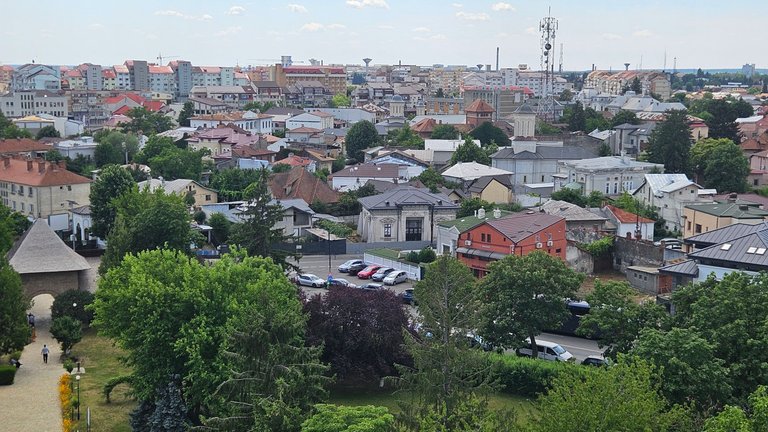
I left the Holy Friday Church, one of the oldest places of worship in Wallachia, an absolutely amazing monument, for last.
The church is still in use today, and elements dating back hundreds of years can still be seen on its walls.
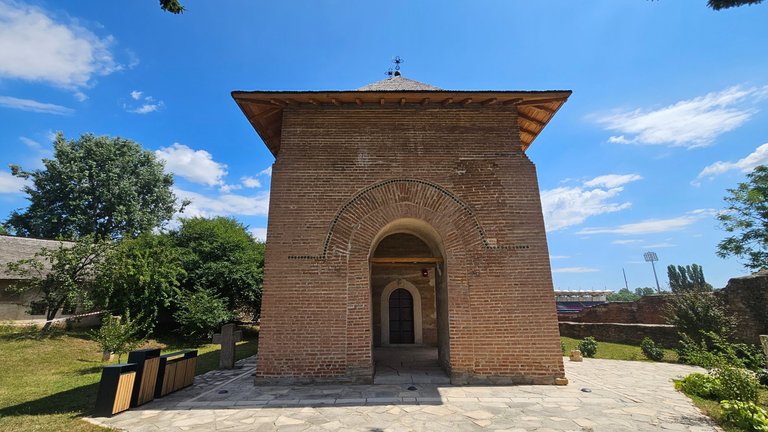
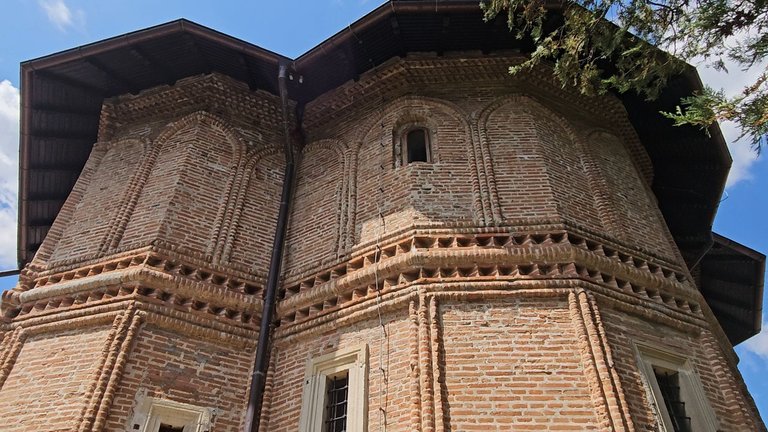

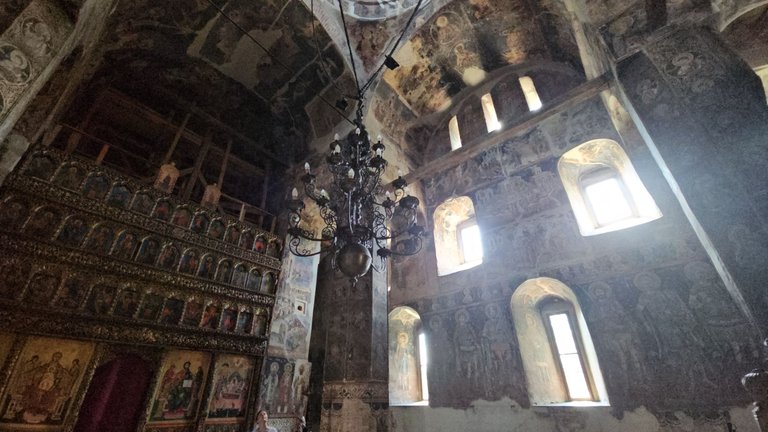
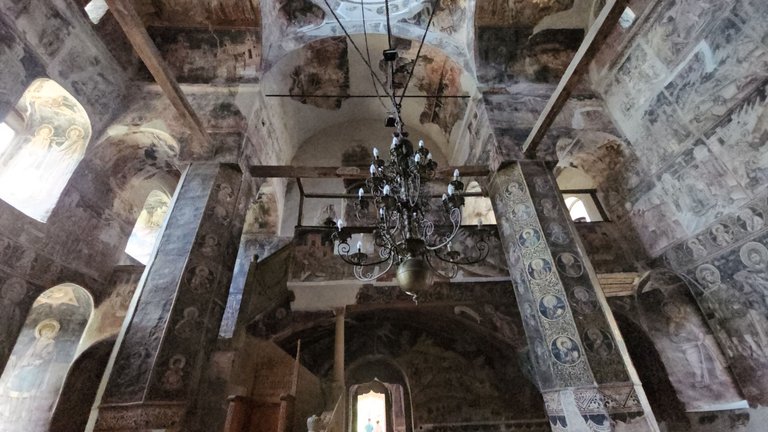
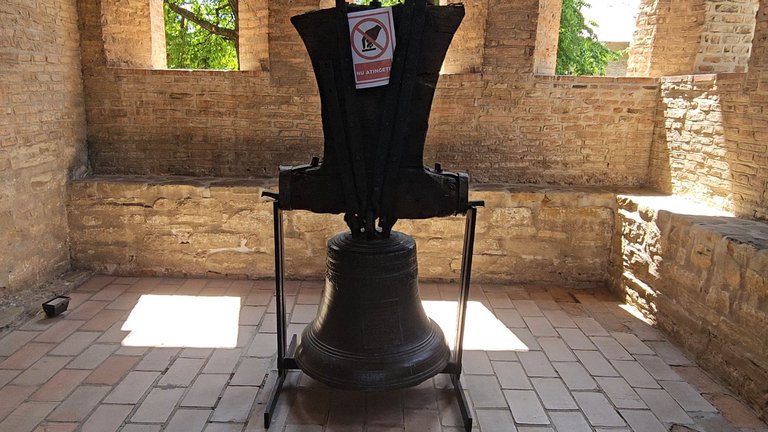
Dear visitors, today's blog post has come to an end. I hope you enjoyed all the places I showed you here, in the Museum Complex in Târgoviște, Dâmbovița County, Romania.
THE END!
If you liked what you saw and read here please don't forget to give a LiKe, Follow, reBlog or a Comment, for all this I thank you, and until the next post I say goodbye.
P.S. The attached picture you have just seen are taken by me with my mobile phone(Samsung Galaxy S21), and the text is also designed by me.
Yours @triplug😉
You can check out this post and your own profile on the map. Be part of the Worldmappin Community and join our Discord Channel to get in touch with other travelers, ask questions or just be updated on our latest features.
Thank you very much.
Hey @triplug you are welcome.
Thanks for using @worldmappin 😘
😘
So beautiful! Wow
Very cool old build,You will definitely be very satisfied visiting this place.
It was a wonderful experience, thank you for stopping by.
What a rich historical journey, @triplug! ✨ It's fascinating to learn about Vlad Dracul and Vlad the Impaler's potential connections to the tower, and the detailed history of the Royal Court 🙌 Thanks for sharing such an insightful and well-documented tour! 😊
The history of this place is very interesting, especially since it is connected to Vlad Țepeș, also known as Dracula. Have you heard of Dracula from Romania or Bran Castle?
Dracula (the vampire from the Carpathians) is not only associated with Bran Castle, but also with the Royal Court here in Târgoviște.
Thank you for visiting.
Wow, what an amazing trip, the beauty of the building is very interesting, and the tower is very impressive and historic, I really like it, my friend ❤️
I'm very glad you liked it and thank you for stopping by.
Hiya, @lauramica here, just swinging by to let you know that this post made it into our Honorable Mentions in Travel Digest #2633.
Your post has been manually curated by the @worldmappin team. If you like what we're doing, please drop by to check out all the rest of today's great posts and consider supporting other authors like yourself and us so we can keep the project going!
Become part of our travel community:
Thank you very much @lauramica and @worldmappin team.
You are very welcome @triplug! it was well deserved. ☀️
We are already looking forward to reading more about your adventures!
🥰
Thank you very much @jlinaresp and @visualshots.
Nice! Were there a lot of people?
Honestly, I was expecting a lot more people, but it wasn't very crowded, and it was also very hot outside.
Yes, this is an issue with the heat. Sometimes, when I travel in Romania, I feel that people don't like to visit. Most nice sites are pretty empty, even if there is a lot to see and learn from there.
Honestly, my opinion is that something dubious is happening in Romania's tourism sector. In fact, I have been saying for some time that Romania does not know how to do tourism. Romanians want to get rich overnight, and the best example of this is the Black Sea coast.
Don't get me wrong, I'm not badmouthing the country I live in, I'm just being realistic. In Romania, there are many accommodation facilities with exaggerated prices, which offer poor conditions in return. Accommodation facilities with a good quality/price ratio are very rare.
Cheers!
I'm on your view here. The tourism industry is very bad, with a lot of improvement options. Somehow, everyone is entitled without work, and they expect to be given without putting the effort in.
We also go visiting other countries, and some or way up higher on service and value/price ratio.
I have visited quite a few countries so far and have a basis for comparison, so when I plan a vacation in Romania, I always compare it to other places to find exactly what suits me.
I hate spending money on something that isn't worth it.
Have a wonderful week ahead!
Congratulations @triplug! Your post has been a top performer on the Hive blockchain and you have been rewarded with this rare badge
You can view your badges on your board and compare yourself to others in the Ranking
If you no longer want to receive notifications, reply to this comment with the word
STOPThank you very much @hivebuzz.
You're truly a Hive pro @triplug! Keep pushing yourself to new levels.
Thank you very much for your support.